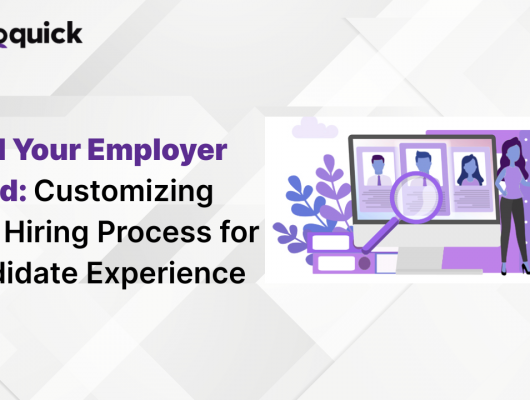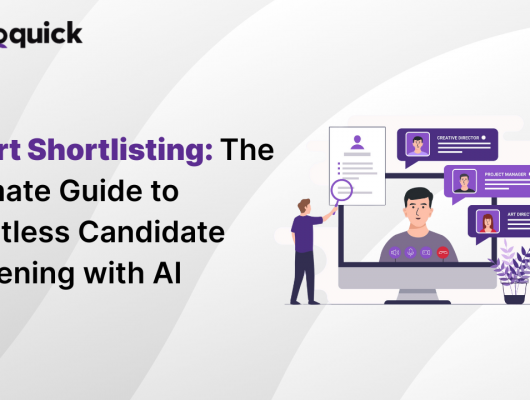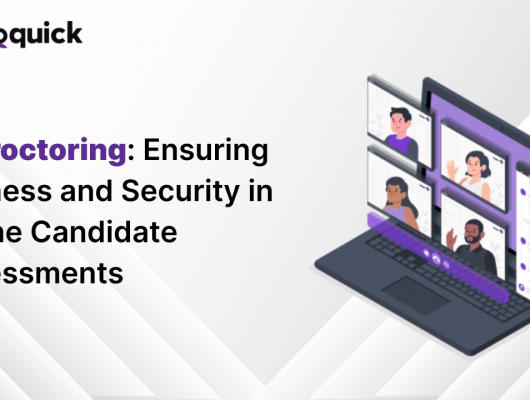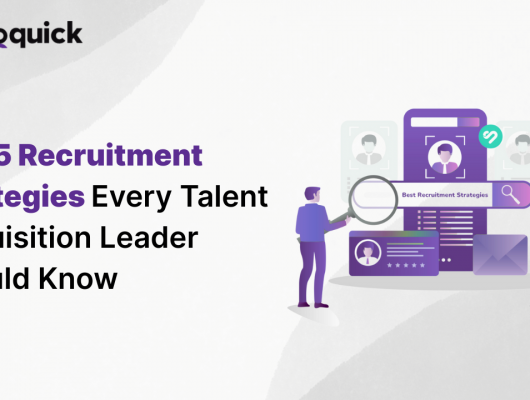The business world? It’s really changing, and pretty fast. And you know, when we talk about diversity now, it’s not just a buzzword anymore, is it? It’s actually turning into a genuine competitive edge. You just see it, companies that really embrace having diverse teams consistently seem to do better than those that maybe don’t have that same kind of representation. In fact, there are studies out there – Deloitte, for example, put out some research suggesting that diverse talent companies can generate something like 2.3 times higher cash flow per employee. That really makes you pause and think, doesn’t it?
Now, when we talk about diverse talent pools, we’re covering a lot of ground. It’s about bringing in people from all sorts of backgrounds and with different perspectives. That means thinking about race, ethnicity, gender, age, disability, and so much more. And these differences? They genuinely bring unique insights and ways of looking at things, especially when you’re trying to solve problems.
So, what’s the point of this post, really? Well, the idea is to offer some practical stuff – strategies and tools – to help you really tap into the potential that diverse talent pools offer. We’ll dig into why diversity is so important, what exactly makes up a diverse pool in today’s context, how you can tackle some of the common challenges you might run into, and which tools could actually lend a hand.
Honestly, for modern businesses, getting recruitment for diverse talent pools right feels pretty essential for growth and for sparking new ideas. We’ll try to cover the ‘why,’ the ‘what,’ the ‘how,’ talk about tools, and even touch on metrics for success. Think of it as a sort of roadmap, from setting those initial diversity goals right through to using technology to make your hiring more inclusive.
The Pretty Clear Business Case for Diverse Talent
Okay, let’s talk about why this matters so much right now. With globalization and demographics shifting, diversity isn’t just a “nice-to-have” thing anymore, you know? It’s really become a core business need.
Enhanced Innovation & Creativity
It kind of makes sense, doesn’t it? Different backgrounds naturally bring different viewpoints. And when you put those together, you often get much more creative ways of solving problems. Teams that truly include a variety of voices just seem to be better at spotting new opportunities and coming up with fresh solutions.
Improved Financial Performance
The research really backs this up consistently – there are clear financial benefits. McKinsey, for instance, reported that companies ranking in the top quarter for racial and ethnic diversity are something like 35% more likely to see financial returns above their national industry averages. That’s a pretty significant number, if you ask me.
Broader Market Reach
Think about it: diverse teams are often better equipped to understand a diverse customer base. They can develop products and services that just resonate with a much wider group of people. And ultimately, that tends to translate into increased market share and more revenue.
Stronger Employer Brand & Reputation
It’s something I’ve seen firsthand; companies known for really committing to diversity seem to attract top talent more easily. A strong reputation in diversity and inclusion also tends to appeal to customers who care about social responsibility. It can really boost brand loyalty and get you some positive attention.
Increased Employee Engagement & Retention
People generally just feel better and do better in environments where they feel included. When employees genuinely feel valued and respected, they’re usually more engaged in their work. And that often means they’re less likely to leave, which helps save on those costly turnover rates, right?
Legal & Ethical Compliance
And let’s not forget, fostering diversity and inclusion is honestly crucial for avoiding those uncomfortable discrimination lawsuits. Beyond the legal side, doing the right thing – promoting fairness and equality – just feels right ethically. Plus, it does protect your company from potential legal headaches down the line.
So, What Exactly Counts as ‘Diverse Talent Pools’?
This part is important. It’s easy to think only about the most obvious categories, but true diverse talent pools really go beyond just the basics. You really need to think more broadly about what diversity means.
Consider all sorts of dimensions here. It’s not just:
- Gender
- Ethnicity
- Age
- Disability (physical, cognitive)
- Veteran Status
It also includes things like:
- Socio-economic Background
- Sexual Orientation & Gender Identity
- Neurodiversity (like Autism, ADHD)
- Geographic Location (Are you considering people from rural areas, not just urban? Or international candidates?)
- Educational Background (Maybe someone who went to vocational school or is self-taught?)
- The type of work experience they have (Maybe non-traditional paths?)
- Religious Background
And you know, it’s worth remembering intersectionality – that idea that individuals often fit into multiple different diverse groups at once. Recognizing those overlapping identities? That’s pretty key, I think.
Okay, so where might you actually find these pools?
- Look towards organizations specifically focused on diversity (groups like the National Urban League, or Out & Equal, for example).
- Community groups can be a great resource.
- Universities often have really diverse student populations you can connect with.
- Online professional networks are, of course, huge these days.
- Don’t forget industry-specific affinity groups.
Dealing with the Challenges of Diversity Recruitment
Let’s be real, recruiting for diversity isn’t always a smooth ride. There are definitely challenges. Just acknowledging these hurdles is probably the very first step to actually getting past them.
- Unconscious Bias: This is a big one. These biases can honestly sneak into everything – how you write job descriptions, how you screen resumes, how interviews go.
- Limited Networks: If you just rely on the people you already know, or your current employees’ networks, you’re likely limiting access to diverse talent right from the start.
- Non-Inclusive Job Descriptions & Processes: Sometimes the language used, or even the requirements listed, can just unintentionally put off diverse candidates.
- Lack of a Diverse Applicant Funnel: If you’re not making enough effort early in the process to source broadly, you’re just going to end up with a candidate pool that looks pretty similar.
- Resistance or Lack of Understanding: Sometimes people internally – maybe hiring managers or other stakeholders – might not fully grasp or support diversity initiatives. That can be tough.
- Measuring Success: Knowing how to track the right things is pretty essential for seeing if you’re actually making progress. It can feel a bit tricky to figure out what metrics matter most.
- Focusing Only on ‘Numbers’: It’s important not to just chase quotas. True inclusion is about so much more than just hitting a number.
Practical Steps for Recruiting More Diverse Candidates
Alright, so moving from the ‘why’ and the challenges to the ‘how.’ Let’s talk about some specific diversity recruiting strategies and diversity and inclusion recruitment ideas that you can actually put into practice.
Setting the Stage: Goals, Training, and Employer Branding
First off, you probably need to get some foundational things right.
- Try to define some clear, measurable diversity goals. What are you actually aiming for? Maybe increase representation by a certain percentage over a few years?
- Training is crucial. Get your recruiters and hiring managers trained on unconscious bias. Help them understand inclusive hiring practices so they can spot and deal with their own biases, or others’.
- Take a good look at your employer brand. Does it genuinely feel inclusive? Check your website, social media, career pages. Do they really show you’re committed to diversity?
- Put together a truly authentic diversity and inclusion statement. Make sure it clearly says what your company values are.
- Tools can help here too. Something like Custom Branding from a platform like HireOquick, for example, could let you really personalize the candidate experience and highlight your specific diversity initiatives.
Expanding Your Reach: Where and How to Source
This means actively looking in new places.
- Don’t just stick to the usual job boards. Explore those niche platforms and professional networks that cater to specific groups.
- Build partnerships! Connect with diversity-focused organizations, local community groups, universities known for diverse student bodies. Building those relationships can really open up talent pools.
- Tap into diverse professional networks and affinity groups. These are often fantastic sources for finding qualified candidates you might otherwise miss.
- Think about your employee referral program. Structure it so it’s truly inclusive and actually encourages employees to refer candidates from diverse backgrounds, not just people who look like them.
- Consider targeted advertising. Put your job ads on platforms where specific communities spend time. Go to where the candidates are.
- Make an effort to attend diversity career fairs, whether they’re online or in person. It’s a great way to network and really demonstrate your company’s commitment face-to-face.
Leveling the Playing Field: Application & Screening Process
This stage is all about making sure everyone gets a fair shot.
- Critically review your job descriptions. Is there any language that might be biased? Tools exist for this – something like Textio can help flag and remove exclusionary terms.
- When you’re first looking at applications, try to focus mainly on the required skills and qualifications, perhaps more than just whether someone seems like a perfect ‘culture fit’ right off the bat. Base your initial assessments on objective criteria.
- Consider blind or anonymized screening. Can you remove names, photos, maybe even university names from initial applications? It can genuinely help reduce unconscious bias creeping in early.
- Use standardized, objective assessments. Make sure they are directly related to what someone actually needs to do in the job. This helps keep evaluations fair and consistent for everyone. Leveraging a feature like HireOquick’s Customize Assessments could be useful here.
Bias-Aware Interviewing Techniques
The interview is often where bias can really show up.
- Try to make sure your interview panels are diverse themselves. Different perspectives on the panel can really help mitigate individual biases.
- Use structured interviews. This means asking everyone the same set of questions and having a clear scoring system. It just makes evaluations more consistent and objective.
- Train your interviewers specifically on how to spot and handle bias during the interview. Give them the tools and knowledge they need to conduct fair evaluations.
- Make the interview environment welcoming. Help candidates feel comfortable and respected from the moment they log on or walk in.
- Be ready to offer accommodations. Be flexible and willing to accommodate candidates’ needs if they ask – it makes a huge difference.
Sealing the Deal: Offer & Inclusive Onboarding
You’ve found the right person, now what?
- Make sure compensation is fair and equitable. Regularly audit pay to identify and fix any disparities.
- When you make an offer, really highlight your company’s commitment to D&I. Talk about your Employee Resource Groups (ERGs), your benefits, how you support employees. Show them your inclusive culture isn’t just talk.
- Design your onboarding process so it actively welcomes and integrates diverse employees. Make sure they have the resources and support they need to actually succeed from day one.
- Assigning mentors or buddies can be incredibly helpful. It helps new employees build connections and navigate the nuances of your company culture.
Using Technology & Tools for Diversity Hiring
Technology, honestly, can be a game-changer. It can really help you scale your diversity efforts and, importantly, help spot and reduce bias.
Think about how different tools can assist:
| Online Hiring Software | Benefit |
|---|---|
| Applicant Tracking Systems | Helps you manage applications smoothly, track diversity metrics as people move through the process, and just generally make hiring more efficient. |
| Bias Detection Tools | These are great for scanning job descriptions, emails, and other communications to find and remove potentially biased language. |
| Diversity Sourcing Platforms | Connects you directly with diverse talent pools you might not easily find otherwise, really expanding your reach. |
| Assessment Tools | Provides standardized, objective ways to test skills and qualifications consistently across candidates. |
| Interviewing Software | Can help you facilitate those structured interviews we talked about and keep track of interviewer feedback in an organized way. |
| Data Analytics & Reporting | Essential for tracking those all-important diversity metrics and really seeing where you’re doing well or need to improve. |
A platform like HireOquick, for example, aims to support these kinds of needs.
- They might offer things like anonymized application views, which is a direct way to help reduce unconscious bias during that initial review.
- Providing structured interview templates and scoring features can help ensure evaluations are more objective.
- Having reporting dashboards is key for keeping an eye on those diversity metrics.
- Integrations with diversity job boards help you cast a wider net.
- And features like AI-powered resume parsing or generating assessments can streamline things, though you always have to be mindful of potential AI bias too, of course. Using their AI-powered Job Description generation could also be a way to try and bake inclusivity in from the start.
Checking Your Impact: Diversity Recruitment Metrics
It’s pretty true what they say: what gets measured usually gets done. So, keeping track of key metrics is just essential for seeing if your diversity recruitment efforts are actually working.
What kind of numbers should you be looking at?
- The diversity makeup of your applicant pool – and track this at each stage: who applies, who gets screened, who gets interviewed, who gets offers, and who gets hired?
- The diversity of your interview panels. Does that reflect your goals?
- Where are your diverse hires coming from? Which channels or sources are the most effective?
- What’s the offer acceptance rate look like across different demographics?
- And importantly, how long are diverse employees staying? Retention rates by demographic can tell you a lot about whether your culture is inclusive after they join.
Use this data. Look at it to figure out what’s working, what’s not, and where you need to tweak your strategies. Set some benchmarks, watch the trends over time, and be ready to adapt your approach as needed.
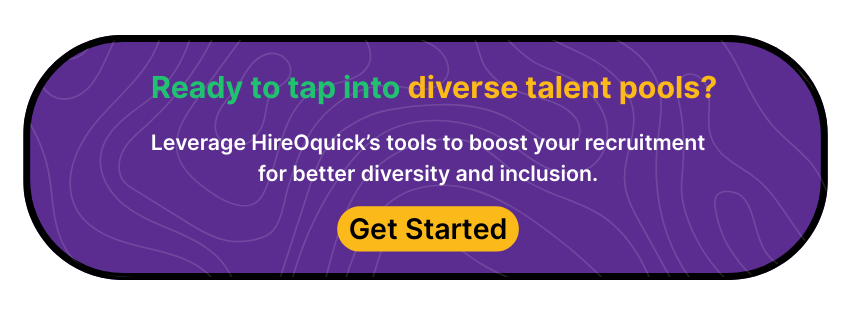
It’s Not Just About Hiring: Building an Inclusive Workplace Culture
Okay, this part is absolutely crucial. Bringing diverse talent in is only really half of the effort, maybe even less. Keeping them requires genuinely creating a workplace culture where everyone feels included.
Leadership really has to be committed. Things like Employee Resource Groups (ERGs), having inclusive policies, and making sure D&I training is ongoing – these are all just fundamental to building a welcoming and supportive environment.
And a strong, inclusive culture does something else important too: it makes future diversity recruitment easier. When people feel truly valued and respected where they work, they’re much more likely to tell their friends and recommend the company to others. It creates a positive cycle.
Looking Ahead: What’s Next in Diversity Recruiting?
This whole field is always evolving, isn’t it? To stay ahead of the curve, it helps to have an eye on what’s emerging.
- We’re starting to see predictive analytics being used to try and spot and reduce potential bias before it happens.
- There’s a growing focus on areas like neurodiversity and other dimensions that maybe haven’t always received as much attention.
- The role of AI is huge – it offers potential benefits, yes, but we also have to be really careful about the risks of baked-in bias.
- Expect more emphasis on transparency and reporting. Companies are increasingly being asked to be open about their diversity numbers and efforts.
Frequently Asked Questions (FAQ)
What’s the real difference between diversity and inclusion?
Think of diversity as the mix – the different kinds of people. Inclusion? That’s about making sure everyone in that mix feels truly valued, respected, and like they can fully participate and contribute. You can have diversity without inclusion, but you really can’t have true inclusion without diversity.
Is diversity recruitment just about hitting quotas?
Honestly, it really shouldn’t be. The focus should be on creating a hiring process that’s fair and gives everyone an equal shot based on their skills and potential. Just chasing numbers or quotas can sometimes feel counterproductive and doesn’t necessarily lead to a genuinely inclusive workplace where people feel they belong.
How can smaller businesses approach diversity hiring?
If you’re a small business, it might feel a bit overwhelming, but you can absolutely start somewhere. Focus on writing job descriptions that feel inclusive, make an effort to broaden where you look for candidates beyond your usual spots, and definitely train your hiring managers on understanding and dealing with unconscious bias. Small steps can make a big difference.
What are some common slip-ups companies make in diversity recruitment?
Oh, there are a few common ones. Relying too much on existing networks is a big one. Getting hung up solely on ‘culture fit’ early on, which can sometimes just mean ‘fits the existing mold’. And, believe it or not, not actually measuring the impact of your diversity efforts – if you don’t track it, it’s hard to improve.
How long does it usually take to see real results from focusing on diversity recruiting?
You know, change like this usually takes time. It’s not an overnight thing. You need to be patient, keep at it consistently, and really stay committed to continuously getting better. You might see some early shifts, but significant results often build over time.
Wrapping Up
So, just to bring it all together, getting your recruitment for diverse talent pools right isn’t just another HR task for modern businesses. It really is a strategic necessity. It’s about creating a level playing field, yes, but it’s also genuinely about sparking new ideas and ultimately driving better business results.
By starting to put some of these strategies we’ve talked about into practice, you really can start to tackle the challenges that come with diversity recruitment and recruiting diverse talent, building an organization that’s both more inclusive and more successful.
Maybe start by just taking a look at your current processes. What could be better? Set some clear goals for diversity, and yes, explore how tools – like something like HireOquick, for instance – could help you streamline things and make the process smoother.
Don’t wait around on this. The way work is going, the future really is diverse.

